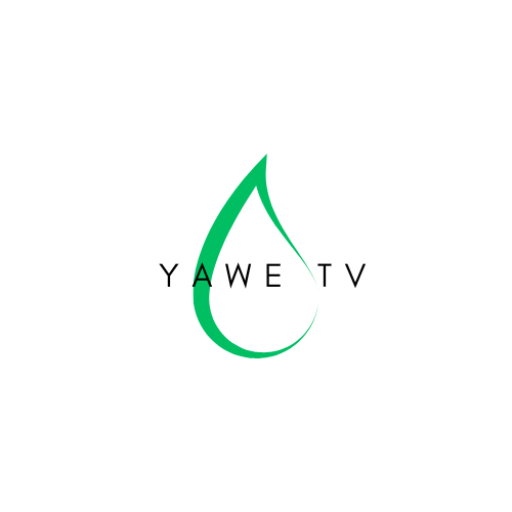A Historic Brink: Zelenskyy’s ‘Difficult Moment’ as Trump Demands Peace Deadline
Ukrainian President Volodymyr Zelenskyy has stated his nation is facing “one of the most difficult moments in its history,” following a demand from the US President Donald Trump to accept a proposed peace plan to end the war with Russia within days. This ultimatum, reportedly set for the US Thanksgiving holiday (November 27th), has ignited an international crisis, placing Kyiv at the center of an impossible geopolitical calculation: preserve national dignity or risk losing its most critical military and economic partner.
The proposed 28-point plan, reportedly drafted with Russian input and aggressively pushed by the White House, is widely viewed by Ukrainian and European officials as one-sided, tantamount to demanding Ukrainian capitulation. The plan, which requires sweeping concessions, is an unprecedented application of pressure that fundamentally shifts the dynamics of the nearly four-year-long conflict. This extensive analysis explores the specifics of the Trump plan, Zelenskyy’s perilous position, the high-stakes international reaction, and the potential, devastating long-term consequences for the global security architecture.
The Trump Peace Plan: A Blueprint for Concession
Leaked details of the 28-point proposal reveal a framework that dramatically favors Moscow’s long-standing demands, effectively rewarding military aggression and undermining the sacrosanct principle of territorial sovereignty. The plan’s core elements require monumental concessions from Kyiv, crossing many of the “red lines” Ukraine has maintained since the beginning of the full-scale invasion in 2022.
The Territorial Mandate: Ratifying Conquest
The most devastating element for Ukraine is the mandate to formally cede significant portions of its sovereign territory. This provision fundamentally contradicts Ukraine’s constitution and international law, which prohibits the changing of borders by force.
- De Facto Russian Territory: The plan requires the US and potentially other signatories to recognize Crimea, Luhansk, and Donetsk as de facto Russian territory. Crucially, this phrasing, and the reported use of the term “belonging to the Russian Federation,” moves dangerously close to de jure (legal) recognition of Russia’s conquest.
- Ceding Uncaptured Land: Painfully, the text reportedly demands that Ukraine withdraw from the parts of Luhansk and Donetsk (Donbas) that remain under Kyiv’s control. This forces the surrender of crucial, heavily fortified defensive positions, opening a potentially clear path for future Russian advances into the rest of Ukraine.
- Freezing Frontlines: The conflict would be frozen along the current line of contact in Kherson and Zaporizhzhia Oblasts. While this prevents further immediate Russian advances, it formalizes Russia’s control over significant Ukrainian cities, including Mariupol, and guarantees a permanent land bridge to Crimea.
The Military and Alliance Restrictions: Neutering Ukraine
Beyond territory, the plan seeks to impose deep, long-term restrictions on Ukraine’s military capabilities and its future security alignment, which are seen as crippling limits on its sovereignty.
- Severely Limited Army: Ukraine would be required to drastically limit the size of its armed forces to a maximum of 600,000 personnel, a substantial reduction from its current fighting strength (estimated at 800,000–850,000). Critically, the plan places no corresponding limits on the size of the Russian military, creating a massive, long-term power imbalance.
- NATO Exclusion: Ukraine would be permanently barred from joining NATO and NATO members would be restricted from stationing troops on Ukrainian soil. This closes the “open door” policy of the Western military alliance and denies Ukraine the reliable, collective security guarantee it views as essential to deter future aggression.
- Prohibitions: The proposal also includes demands for snap elections in Ukraine within 100 days of an agreement (which is illegal under current martial law) and the adoption of certain educational programs, which echo Russian propaganda narratives.
Incentives for Russia and the World
The plan also includes significant concessions and rewards for the aggressor, which are designed to entice Moscow’s participation and alleviate the economic pressure facing the Russian state.
- Sanctions Relief: The framework calls for negotiations on the gradual lifting of sanctions imposed on Russia since the invasion, and its potential readmittance to the G8 (from which it was suspended after the 2014 annexation of Crimea).
- Frozen Assets Compromise: While the plan proposes dedicating $100 billion in frozen Russian assets to rebuilding Ukraine, it also suggests that the remaining frozen assets would be directed into a joint US-Russia investment fund, a provision highly favorable to Moscow.
Zelenskyy’s Choice: Dignity or Survival
In his somber public address, President Zelenskyy articulated the stark nature of the choice facing Kyiv, describing the current moment as a dilemma between “losing our dignity or the risk of losing a key partner.” The ultimatum comes at a time of maximum vulnerability for Ukraine, increasing the leverage of the US demands.
The Pressure Points
- US Aid Suspension Threat: Reports suggest that the Trump administration is actively threatening to cut vital intelligence sharing and the remaining weapons supplies to Ukraine if Kyiv refuses to sign the deal. Given that the US remains the single largest supplier of advanced military technology and intelligence, this is an existential threat to Ukraine’s defense capability.
- A Brutal Winter: The war’s fourth winter is proving to be the most difficult yet, with Russia relentlessly targeting and destroying Ukraine’s energy infrastructure. Millions of Ukrainians are facing life without reliable heat and electricity, creating a humanitarian crisis that increases internal pressure on the government to end the conflict at any cost.
- Domestic Political Crisis: Zelenskyy is currently facing the largest corruption scandal since taking office, with public morale already flagging after years of brutal war. The timing of the Trump administration’s ultimatum appears designed to exploit this moment of domestic political weakness, as noted by some foreign diplomats.
Kyiv’s Delicate Response Strategy
Zelenskyy’s immediate public response was cautiously measured. He did not reject the plan outright, which would risk an immediate rupture with Washington. Instead, he employed a strategy of constructive engagement aimed at buying time and seeking revisions:
- Seeking Alternatives: Zelenskyy stated he would work calmly and constructively with Washington, “offering alternatives” to the draft proposal. This is an attempt to appear cooperative while simultaneously pushing back on the most damaging terms.
- Involving European Allies: The President immediately engaged in phone calls with key European leaders, including the German Chancellor, the French President, and the UK Prime Minister. This unified diplomatic outreach seeks to build a Transatlantic consensus that would temper the US administration’s aggressive timeline and influence the negotiation of the final text.
- Focus on ‘Real Peace’: Ukraine’s consistent message is that it welcomes diplomatic efforts but seeks a “real and dignified peace” that includes effective security guarantees to prevent a “third Russian invasion.”
The Global Geopolitical Shockwave
The unveiling of the Trump plan has triggered a severe geopolitical shockwave, raising deep concerns across Europe and within the US security establishment, as the deal threatens to undermine the core principles of the post-WWII international order.
European Alarm and Solidarity
European allies, who were reportedly excluded from the drafting process between US and Russian officials, have reacted with a mix of cautious diplomacy and private alarm.
- Principle of Sovereignty: Leaders from Germany, France, and the UK have been quick to reaffirm their “unchanged and full support” for Ukraine and the fundamental principle that any agreement must respect Ukraine’s sovereignty and territorial integrity.
- Line of Contact: European officials have insisted that the current line of contact, not the proposed ceding of uncaptured Donbas territory, must be the starting point for any agreement.
- The Threat to NATO: The plan’s explicit bar on NATO membership is viewed by many European security experts as a betrayal of the alliance’s principles and a direct gift to Moscow, effectively granting Russia a permanent, veto-like sphere of influence over a sovereign European state.
US Bipartisan Condemnation
Within the US, the plan has faced sharp criticism from both sides of the aisle, particularly from congressional leaders and national security policy experts.
- Rewarding Aggression: Critics, including prominent senators, have slammed the proposal as effectively rewarding military aggression and setting a dangerous precedent that dictators and autocrats globally can seize territory by force and expect international recognition.
- The “Munich” Parallel: The sentiment among some long-term foreign policy analysts is one of historical dread, with some comparing the proposal to the infamous 1938 Munich Agreement, which appeased Nazi Germany and failed to prevent World War II.
- The Russian Wish List: Security analysts have noted that much of the 28-point plan reads like a Russian wish list, with its demands for territorial surrender, military limits on Ukraine, and sanctions relief for Moscow, suggesting a deep tilt in the negotiation process.
Strategic Analysis and Long-Term Implications
The Trump ultimatum represents a decisive pivot in the war’s trajectory, shifting the battlefield from the trenches to the negotiating table, and forcing the West to confront fundamental questions about its commitment to international law and democratic defense.
The Risk of an Unstable Peace
The greatest long-term danger of a peace deal structured on the current framework is that it would create a temporary, unstable truce, not a lasting peace.
- A Vulnerable Ukraine: By drastically reducing Ukraine’s military size and capacity, and denying it a robust security umbrella like NATO, the deal would leave Kyiv perpetually vulnerable to a renewed Russian invasion once Moscow has had time to replenish its forces and reorganize.
- Incentive for Future Aggression: Rewarding Russia with captured territory sends a clear signal that military conquest yields dividends. This incentivizes future aggression not just by Russia but by other powerful states seeking to redraw borders by force, dramatically destabilizing international relations and global trade.
The Leverage of European Defense
The crisis is forcing Europe to take a far more assertive and independent role in security policy and defense cooperation.
- Boosting European Defense: The pressure from Washington is likely to accelerate Europe’s push for increased defense spending, the development of a more unified European defense capability, and the implementation of robust, long-term bilateral security guarantees for Ukraine that are independent of US political cycles.
- The Role of Bilateral Guarantees: The future of Ukraine’s security may rest on the strength of bilateral agreements from powerful European states (e.g., France, UK, Germany) that are willing to commit substantial military and economic resources to Kyiv’s long-term defense, potentially filling the void left by a diminished US commitment.
The ultimatum has successfully achieved one thing: it has forced a moment of truth. Zelenskyy is tasked with navigating an almost impossible diplomatic challenge, balancing the deeply felt desire for an end to the bloodshed against the moral and strategic imperative of preserving national sovereignty. The choice he makes in the coming days will not only determine the future of Ukraine but will also define the character of Transatlantic relations and the fate of the post-Cold War global order.











